List of World Heritage sites in Austria
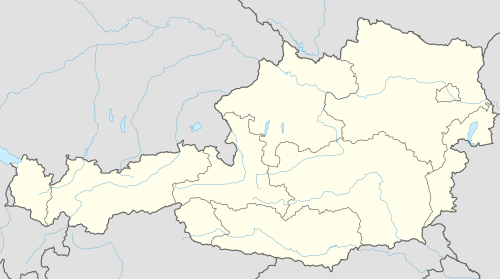
The United Nations Educational, Scientific and Cultural Organization (UNESCO) World Heritage sites are places of importance to cultural or natural heritage as described in the UNESCO World Heritage Convention, established in 1972.[1] Austria ratified the convention on December 18, 1992, making its historical sites eligible for inclusion on the list.[2]
Sites in Austria were first inscribed on the list at the 20th Session of the World Heritage Committee, held in Mérida, Mexico in 1996. At that session, two sites were added: the "Historic Centre of Salzburg", and the "Palace and Gardens of Schönbrunn".[3] Other sites were added each year until 2001 and again in 2011 and 2017. As of September 2017, Austria has 10 total sites inscribed on the list. Of these, three sites are shared with other countries: "Fertö / Neusiedlersee Cultural Landscape" with Hungary; "Prehistoric pile dwellings around the Alps" with France, Germany, Italy, Slovenia and Switzerland; and "Ancient and Primeval Beech Forests of the Carpathians and Other Regions of Europe" with Albania, Belgium, Bulgaria, Croatia, Germany, Italy, Romania, Slovakia, Slovenia, Spain, and Ukraine. All but one of the World Heritage sites in Austria are of the cultural type.[2]
World Heritage sites
In the following table, the UNESCO data includes the site's reference number and the criteria it was listed under: criteria i through vi are cultural, whereas vii through x are natural.
| Site | Image | Location | Year listed | UNESCO data | Description |
|---|---|---|---|---|---|
| Historic Centre of Salzburg | 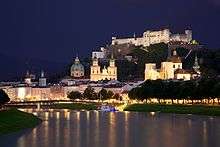 |
Salzburg | 1996 | 784; ii, iv, vi (cultural) | Best associated with Austrian composer Wolfgang Amadeus Mozart, Salzburg is known for its ecclesiastic city-state qualities only second to Vatican City. It is also where German and Italian cultures intersected, which is reflected by its blend of Gothic- and Baroque-style buildings.[4] |
| Palace and Gardens of Schönbrunn | .jpg) |
Vienna | 1996 | 786; i, iv (cultural) | The residence of the Habsburg emperors from the 18th century to 1918. It was built in the rococo style as a single, unified project. It was designed by the architects Johann Bernhard Fischer von Erlach and Nicolaus Pacassi and was the site of the world's first zoo.[5] |
| Hallstatt-Dachstein / Salzkammergut Cultural Landscape | 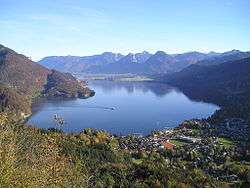 |
Salzkammergut | 1997 | 806; iii, iv (cultural) | The region built itself around salt mining, which began as early as 2,000 BCE and continued in the modern era. The region is also known for its mountain ranges and caves, the longest of the latter reaching a length of 81 km (50 mi).[6] |
| Semmering railway | 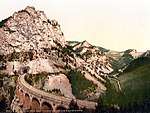 |
Gloggnitz, Semmering | 1998 | 785; ii, iv (cultural) | The Semmering Railway was built between 1848 and 1854 and covers 41 km (25 mi) of rugged mountains. This project was undertaken in the early days of railroad construction and required a number of innovations. The tunnels, viaducts and other works are still in use today.[7] |
| City of Graz – Historic Centre and Schloss Eggenberg | 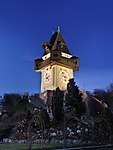 |
Graz | 1999 | 931; ii, iv (cultural) | A branch of the Habsburg family lived in Graz for centuries. The Habsburgs and other local nobles beautified and expanded Graz over centuries, leading to a city with grand buildings in a number of styles.[8] |
| Wachau Cultural Landscape | 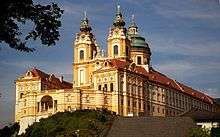 |
Wachau | 2000 | 970; ii, iv (cultural) | The Wachau is a 40 km (25 mi) long valley along the Danube river between Melk and Krems. The valley was settled in prehistoric times and has been an important region since then. It is home to a number of historic towns, villages, monasteries, castles and ruins.[9] |
| Fertö / Neusiedlersee Cultural Landscape* |  |
Burgenland | 2001 | 772; v (cultural) | The Fertö/Neusiedler Lake area has been occupied by different peoples for eight millennia. A number of 18th and 19th century villages and castles were built on top of the ancient settlements and landscape.[10] |
| Historic Centre of Vienna |
Vienna | 2001 | 1033; ii, iv, vi (cultural) | "The historic centre of Vienna is rich in architectural ensembles, including Baroque castles and gardens, as well as the late-19th-century Ringstraße lined with grand buildings, monuments and parks."[11] In 2017, the site was inscribed on the list of World Heritage in Danger due to planned new high-rise buildings.[12] | |
| Prehistoric pile dwellings around the Alps* | – | Attersee, Keutschach, Seewalchen am Attersee, Mondsee | 2011 | 1363; iv, v (cultural) | Remains of prehistoric pile-dwelling (or stilt house) settlements in and around the Alps built from around 5000 to 500 B.C. on the edges of lakes, rivers or wetlands. While only some of the sites have been excavated, they contain a wealth of information on life and trade in agrarian Neolithic and Bronze Age cultures in Alpine Europe. There are five sites listed in Austria.[13] |
| Ancient and Primeval Beech Forests of the Carpathians and Other Regions of Europe* |  |
Dürrenstein, Kalkalpen | 2017 | 1113; ix (natural) | Primeval Beech Forests of the Carpathians are used to study the spread of the beech tree (Fagus sylvatica) in the Northern Hemisphere across a variety of environments and the environment in the forest. The site is a part of transnational site, also shared with Albania, Belgium, Bulgaria, Croatia, Germany, Italy, Poland, Romania, Slovakia, Slovenia, Spain, and Ukraine.[14] |
Tentative list
In addition to sites inscribed on the World Heritage list, member states can maintain a list of tentative sites that they may consider for nomination. Nominations for the World Heritage list are only accepted if the site was previously listed on the tentative list.[15] As of 2014, Austria recorded 10 sites on its tentative list. The sites, along with the year they were included on the tentative list are:[16]
- Cultural Landscape of "Innsbruck-Nordkette/Karwendel" (2002)
- Iron Trail with Erzberg and the old town of Steyr (2002)
- Bregenzerwald (Bregenz Forest) (1994)
- Abbey of Kremsmünster (1994)
- Heiligenkreuz Abbey (1994)
- Hochosterwitz Castle (1994)
- Cathedral of Gurk (1994)
- National Park "Hohe Tauern" (2003)
- Hall in Tyrol – The Mint (2013)
- Frontiers of the Roman Empire - The Danube Limes in Austria (2015)
- Grossglockner High Alpine Road (2016)
References
- ↑ "The World Heritage Convention". UNESCO. Retrieved September 17, 2010.
- 1 2 "Austria – Properties inscribed on the World Heritage List". UNESCO. Retrieved July 12, 2014.
- ↑ "Report of the Rapporteur". UNESCO. March 10, 1997. Retrieved July 12, 2014.
- ↑ "Historic Centre of the City of Salzburg". UNESCO. Retrieved 7 November 2011.
- ↑ "Palace and Gardens of Schönbrunn". UNESCO. Retrieved 20 February 2012.
- ↑ "Hallstatt-Dachstein / Salzkammergut Cultural Landscape". UNESCO. Retrieved 7 November 2011.
- ↑ "Semmering railway". UNESCO. Retrieved 20 February 2012.
- ↑ "City of Graz – Historic Centre and Schloss Eggenberg". UNESCO. Retrieved 7 November 2011.
- ↑ "Wachau Cultural Landscape". UNESCO. Retrieved 22 February 2012.
- ↑ "Fertö / Neusiedlersee Cultural Landscape". UNESCO. Retrieved 8 November 2011.
- ↑ "Historic Centre of Vienna". UNESCO. Retrieved 7 November 2011.
- ↑ "Historic Centre of Vienna inscribed on List of World Heritage in Danger". UNESCO. Retrieved 6 July 2017.
- ↑ "Prehistoric Pile dwellings around the Alps". UNESCO. Retrieved 14 February 2012.
- ↑ "Ancient and Primeval Beech Forests of the Carpathians and Other Regions of Europe". UNESCO. Retrieved 7 September 2017.
- ↑ "Tentative Lists". UNESCO. Retrieved July 12, 2014.
- ↑ "Hungary – Properties inscribed on the World Heritage List". UNESCO. Retrieved July 12, 2014.
Notes
- ↑ The site Prehistoric pile dwellings around the Alps consists of 111 separate sites spread over six countries. The dot in the map indicates the Attersee which is home to three of Austria's five UNESCO pile dwellings.
- ↑ The site Ancient and Primeval Beech Forests of the Carpathians and Other Regions of Europe consists of 78 separate sites spread over twelve countries. The dot in the map indicates "Kalkalpen - Hintergebirg" which is the largest of Austria's five UNESCO beech forests.
